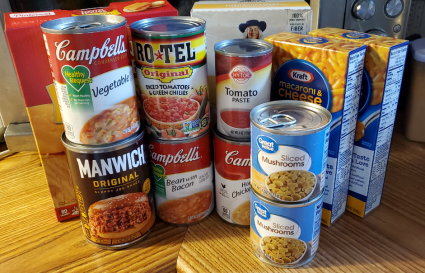SNAP benefits will be partially funded in November, county and businesses offer additional help
President Donald Trump’s administration said Monday that it will partially fund SNAP for November, after two judges issued rulings requiring the government to keep the nation’s largest food aid program running.
The U.S. Department of Agriculture, which oversees the Supplemental Nutrition Assistance Program, had planned to freeze payments starting Nov. 1 because it said it could no longer keep funding it during the federal government shutdown. The program serves about 1 in 8 Americans and is a major piece of the nation’s social safety net. It costs more than $8 billion per month nationally. The government says an emergency fund it will use has $4.65 billion — enough to cover about half the normal benefits.
Exhausting the fund potentially sets the stage for a similar situation in December if the shutdown isn’t resolved by then.
It’s not clear exactly how much beneficiaries will receive, nor how quickly they will see value show up on the debit cards they use to buy groceries. November payments have already been delayed for millions of people.
The administration also provided an infusion to the Special Supplemental Nutrition Program for Women, Infants, and Children, which helps low-income mothers buy nutritious staples. WIC received an additional $450 million in funding, according to a senior administration official who spoke Monday on condition of anonymity because they were not authorized to discuss the decision publicly. POLITICO first reported on the funding Monday afternoon.
Last month, some states warned they only had enough money to operate their WIC programs until mid-November. The administration last month reallocated $300 million in unspent tariff revenue to keep the program running.
Details on how payments will roll out are still to come
The administration said it would provide details to states Monday on calculating the per-household partial benefit. The process of loading the SNAP cards, which involves steps by state and federal government agencies and vendors, can take up to two weeks in some states. But the USDA warned in a court filing that it could take weeks or even months for states to make all the system changes to send out reduced benefits. The average monthly benefit is usually about $190 per person.
The USDA said last month that benefits for November wouldn’t be paid due to the federal government shutdown. That set off a scramble by food banks, state governments and the nearly 42 million Americans who receive the aid to find ways to ensure access to groceries.
Advocates and beneficiaries say halting the food aid would force people to choose between buying groceries and paying other bills. The majority of states have announced more or expedited funding for food banks or novel ways to load at least some benefits onto the SNAP debit cards.
To qualify for SNAP in 2025, a household’s net income after certain expenses can’t exceed the federal poverty line. For a family of four, that’s about $32,000 per year.
In Minnesota, approximately 453,860 people, or about 7.9% of the state’s population, depend on SNAP benefits. Gov. Tim Walz has said the state will provide up to $4 million in emergency funding for food pantries.
Cook County and local businesses step forward to help
In Cook County, Public Health and Human Services has responded to community members’ need for food assistance. PHHS is hosting a food drive at the Cook County Courthouse and providing gift cards to Ruby’s Pantry and local grocery stores.
Until the end of the year, the courthouse lobby will contain several bins labeled for specific types of canned and non-perishable food items. Community members can donate food to the bins, and those in need of food support can visit the courthouse to collect the necessary items.
“While these efforts cannot fully replace the amount of food assistance dollars provided through federally funded programs like SNAP and MFIP, we as a county public health and human services agency want to do what we can to help fill the gaps so that no one experiences the pain of hunger or the need to choose between paying for food and other essentials like housing, transportation, or utility costs,” said Plamen Dimitrov, PHHS Interim Director in a Oct. 29 media release.
Combined SNAP and the Minnesota Family Investment Program (MFIP) serve an average of 235 people in Cook County each month.
The program benefits range from $23 to $1,158 monthly, depending on factors such as income and household size. PHHS stated in the media release that the average monthly food benefit per participant is $154.
Individuals in need of food support can also call PHHS at 218-387-3620 or come to the PHHS front desk in the courthouse to request a Ruby’s Pantry voucher or a gift card to a local grocery store.
In addition to PHHS, numerous local non-profits, and Cook County businesses have stepped forward to provide warm meals, gift cards, and additional resources for those in need. Businesses such as The Fisherman’s Daughter, Java Moose, Clearview General Store, Johnson’s Foods, the Gunflint Tavern, and others have offered discounts, gift cards, and more.
The Associated Press contributed to this report.













